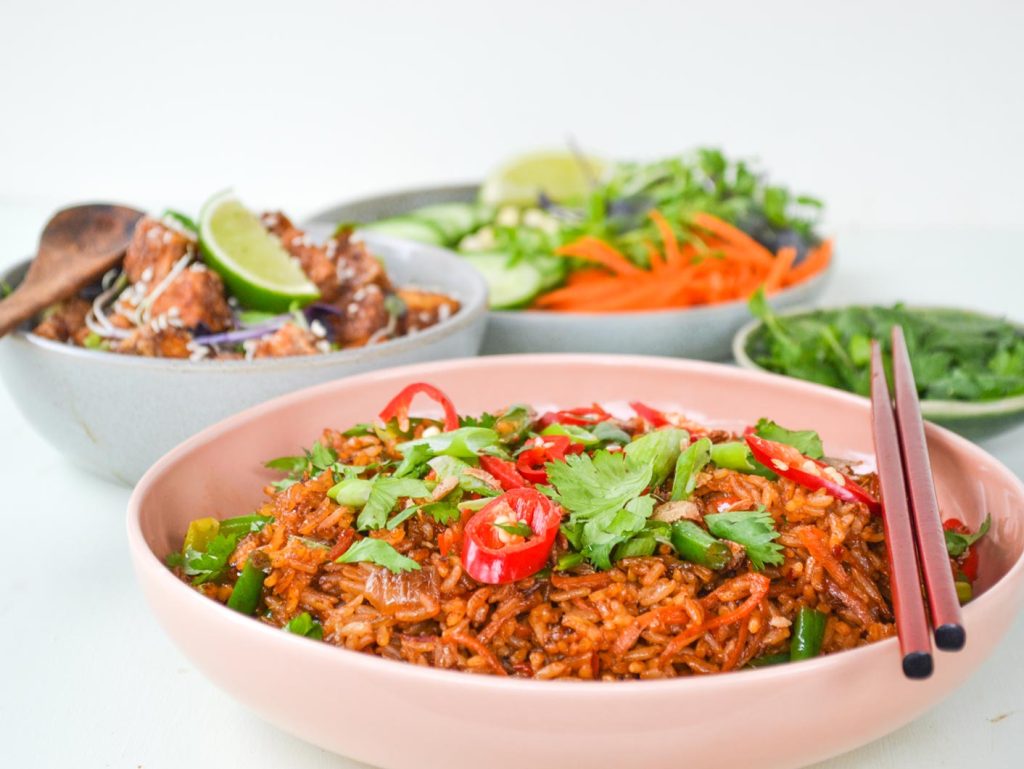Nasi goreng, or fried rice, is a beloved dish in Indonesian cuisine that transcends the boundaries of mere comfort food. Known for its vibrant flavors and versatility, nasi goreng holds a special place in the hearts of many, both in Indonesia and around the world. This article explores the rich history, cultural significance, and the culinary knowledge behind nasi goreng, revealing why it is much more than just a simple meal.
The Origins of Nasi Goreng

Historical Background
Nasi goreng has its roots in the Chinese fried rice tradition, which was brought to Indonesia by Chinese immigrants. Over time, this dish evolved to incorporate local ingredients and flavors, resulting in a unique Indonesian version. The adaptation of fried rice reflects the blending of cultures and culinary practices that characterize Indonesia’s diverse food landscape.
Culinary Development
The knowledge of preparing nasi goreng has been passed down through generations, with each region in Indonesia adding its own twist. Traditional recipes often utilize leftover rice, making it a practical choice for many households. The incorporation of various ingredients, such as vegetables, meats, and spices, showcases the creativity and resourcefulness of Indonesian cooks.
The Cultural Significance of Nasi Goreng
A Symbol of Indonesian Identity
Nasi goreng is often considered a national dish of Indonesia, embodying the country’s rich culinary heritage. It is a staple in both casual and formal settings, served at family gatherings, street food stalls, and upscale restaurants alike. This widespread popularity highlights its importance in Indonesian culture and daily life.
Comfort Food
For many Indonesians, nasi goreng represents comfort and nostalgia. It is a dish that evokes memories of home-cooked meals and family gatherings. The aroma of fried rice sizzling in the pan often brings back fond memories, making it a cherished comfort food for people of all ages.
Culinary Knowledge and Tradition
The preparation of nasi goreng involves a wealth of culinary knowledge, from selecting the right ingredients to mastering the cooking techniques. Common components include:
- Rice: Ideally, day-old rice is used for its drier texture, which prevents clumping.
- Vegetables: Ingredients like carrots, peas, and green onions add color and nutrition.
- Proteins: Options such as chicken, shrimp, or tofu can be added for flavor and substance.
- Seasonings: Soy sauce, garlic, and chili paste are essential for achieving the dish’s signature taste.
The Making of Nasi Goreng
Ingredients
Key ingredients in nasi goreng typically include:
- Cooked Rice: Preferably leftover rice for the best texture.
- Shallots and Garlic: For aromatic flavor.
- Chili Paste: To add heat and depth.
- Soy Sauce: For seasoning and color.
- Vegetables: Such as carrots, peas, and green beans.
- Protein: Options like chicken, beef, shrimp, or egg.
Cooking Process
The process of making nasi goreng involves several steps, showcasing the knowledge of traditional cooking techniques:
- Preparation: Chop vegetables and proteins into small pieces for even cooking.
- Sautéing: Heat oil in a wok and sauté shallots and garlic until fragrant.
- Adding Ingredients: Add proteins and vegetables, cooking until done.
- Incorporating Rice: Add the cooked rice and mix well, ensuring it is heated through.
- Seasoning: Stir in soy sauce and chili paste, adjusting to taste.
- Serving: Garnish with green onions and serve hot, often accompanied by fried eggs or krupuk (crackers).
Nasi Goreng in Contemporary Cuisine
Global Popularity
Nasi goreng has gained international recognition, appearing on menus in restaurants worldwide. Its adaptability and delicious flavors have made it a favorite among food enthusiasts, showcasing Indonesian cuisine on the global stage.
Variations
While traditional nasi goreng features specific ingredients, countless variations exist, reflecting local tastes and dietary preferences. Some popular adaptations include:
- Nasi Goreng Kampung: A rustic version with simple ingredients.
- Nasi Goreng Seafood: Featuring a mix of seafood, such as shrimp and squid.
- Vegetarian Nasi Goreng: Made with tofu and a variety of vegetables.
Fusion Cuisine
Chefs around the world are experimenting with nasi goreng, incorporating it into fusion dishes that blend different culinary traditions. This innovation highlights the versatility of fried rice and its ability to adapt to contemporary tastes while preserving its cultural roots.
Conclusion
Nasi goreng is much more than just comfort food; it is a dish steeped in history, culture, and culinary knowledge. Its significance as a symbol of Indonesian identity and its role as a beloved comfort food make it a cherished part of the nation’s culinary heritage. As nasi goreng continues to gain popularity worldwide, it serves as a delicious reminder of Indonesia’s rich culinary traditions and the stories that connect people through food. By understanding the knowledge behind nasi goreng, we can appreciate its place in both local and global cuisine, celebrating the flavors and traditions that make it truly special.
Read also about World Classroom to explore how global learning experiences, cross-cultural education, and digital tools are transforming the way we connect and grow together.



